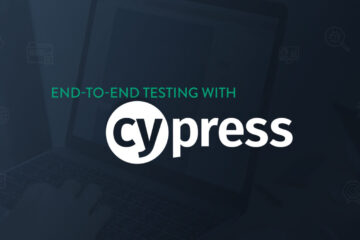Introduction
In the realm of data science, Python stands tall as a versatile tool set for handling complex datasets and extracting valuable insights. This guide dives straight into the core concepts and libraries essential for mastering Python for data science.
Python Essentials for Data Science
- Python’s simplicity and robustness make it an ideal language for data manipulation and analysis.
- Start by installing Anaconda, a comprehensive distribution that includes essential libraries like Pandas and Matplotlib, and fire up Jupyter Notebooks for an interactive coding experience.
Or try Jupyter Notebook in your browser.
1 2 3 4 5 6 7 | # Example: Importing Pandas and reading a CSV fileimport pandas as pd# Load datasetdata = pd.read_csv('data.csv')print(data) |
data.csv
1 2 3 4 5 6 7 8 9 10 11 12 13 14 15 16 17 18 19 20 21 | Name,Age,Gender,CityJohn,25,Male,New YorkEmily,30,Female,Los AngelesMichael,40,Male,ChicagoJessica,35,Female,HoustonDavid,28,Male,MiamiSophia,33,Female,San FranciscoDaniel,45,Male,SeattleOlivia,27,Female,BostonMatthew,38,Male,DallasAva,29,Female,AtlantaWilliam,32,Male,DenverEmma,31,Female,PhiladelphiaJames,36,Male,PhoenixIsabella,26,Female,DetroitBenjamin,39,Male,MinneapolisMia,34,Female,PortlandEthan,37,Male,San DiegoCharlotte,41,Female,Washington D.C.Alexander,24,Male,AustinAbigail,42,Female,Orlando |
Data Manipulation with Pandas
- Pandas is the Swiss Army knife of data manipulation in Python, offering powerful tools for slicing, dicing, and transforming datasets.
- Dive into Pandas with examples of filtering rows, creating new columns, and summarizing data.
1 2 3 4 5 6 7 8 9 10 | # Example: Filtering data using Pandasimport pandas as pd# Load datasetdata = pd.read_csv("data.csv")# Filter based on Genderfiltered_data = data[data['Gender'] == 'Male']print(filtered_data) |
Visualizing Data with Matplotlib and Seaborn
- Matplotlib and Seaborn are indispensable for creating insightful visualizations from your data.
- Learn to craft compelling plots, histograms, and scatter plots to reveal patterns and relationships within your dataset.
1 2 3 4 5 6 7 8 9 10 11 | # Example: Creating a scatter plot with Matplotlibimport matplotlib.pyplot as plt# Load datasetdata = pd.read_csv('data.csv')plt.scatter(data['Gender'], data['Location'])plt.xlabel('Gender')plt.ylabel('Location')plt.title('Scatter Plot')plt.show() |
Building Predictive Models with scikit-learn
- Enter the realm of machine learning with scikit-learn, where you can build and train predictive models effortlessly.
- Explore classification and regression algorithms with examples ranging from decision trees to support vector machines.
1 2 3 4 5 6 7 8 9 10 11 12 13 14 15 16 17 18 19 20 21 22 23 24 25 26 27 28 29 30 31 | import numpy as np# Generate random data for features (X) and target (y)np.random.seed(0)X = np.random.rand(100, 2) # 100 samples, 2 featuresy = np.random.randint(2, size=100) # Binary target variable (0 or 1)# Display the first few rows of the datasetprint("Features (X):")print(X[:5])print("\nTarget (y):")print(y[:5])# Example: Building a decision tree classifier with scikit-learnfrom sklearn.tree import DecisionTreeClassifierfrom sklearn.model_selection import train_test_splitfrom sklearn.metrics import accuracy_score# Split data into training and testing setsX_train, X_test, y_train, y_test = train_test_split(X, y, test_size=0.2)# Initialize and train the modelmodel = DecisionTreeClassifier()model.fit(X_train, y_train)# Make predictionspredictions = model.predict(X_test)# Evaluate model accuracyaccuracy = accuracy_score(y_test, predictions)print("Accuracy:", accuracy) |
Conclusion
Python offers a robust ecosystem of libraries and tools that make it the ultimate choice for data science. By mastering Python essentials like Pandas, Matplotlib, and scikit-learn, you’ll be well-equipped to tackle any data analysis or modeling task with confidence. So dive into the code examples, explore your datasets, and let Python guide you on your data science journey!



0 Comments